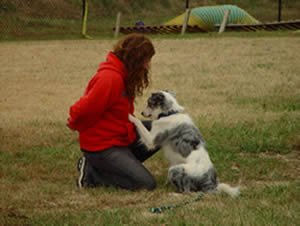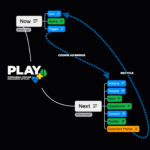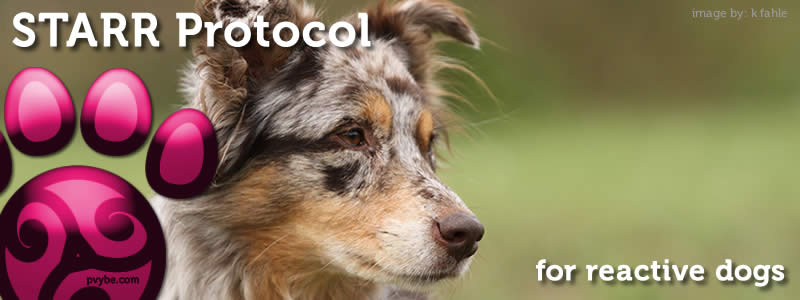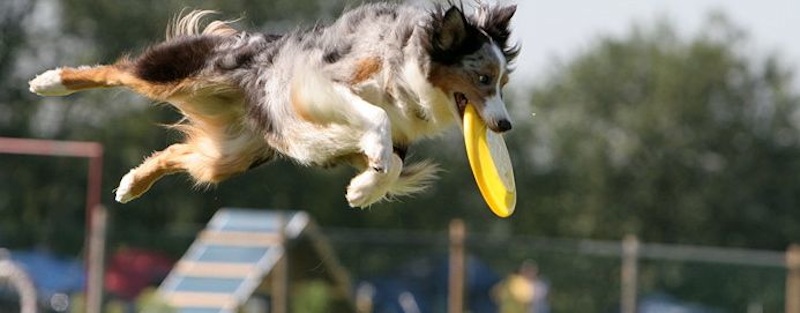
My Dog is not Food Motivated
This issue comes up every once in a while in my discussions and training sessions with students and potential students. Personally, I’ve never ran across a dog that’s not food motivated, and I don’t really think they exist. Any dog that is in decent shape and is hungry is motivated by food.
The idea that a highly driven dog is incapable of operant thought is false, as is the idea that some highly driven dogs are not motivated by food.
Over Fed and Over Threshold
Dogs that are fat or over-fed, might not take food, but that’s not because they are not motivated by food, per se, it’s because they are not hungry or don’t need it. If the weight comes off, and the food intake is decreased, these dogs become highly motivated by food, sometimes too motivated by food. Most dogs that are involved in dog sports don’t have the fat, or over-fed problem dampening their motivation for food, they have an over-stimulation problem.
Overstimulation is an extremely common problem for dogs that participate in dog sports and their handlers, and many dog training professionals often misdiagnose over-stimulation as ‘high-drive’.
There is a concept discussed at length in Control Unleashed, by Leslie McDevitt, called threshold. The overstimulated dog has crossed the threshold for rational, sensible thought, and becomes incapable of making good decisions.
The poorly understood concepts of overstimulation, threshold and drive is what has led good dog trainers to believe in the false dichotomy of ‘Operant vs Drive’ and the idea that the two states are mutually exclusive.
The idea that a highly driven dog is incapable of operant thought is false, as is the idea that some highly driven dogs are not motivated by food.
The Classical Condition and the Over-stimulated Dog
You are about to speak at a Dog Sports Hall of Fame ceremony, with the greatest dog trainers in your sport and all the other sports assembled to hear your speech. It’s 10 minutes before your set to go on and I ask you,”Hey, you want a hotdog?” You might punch me.
Odds are, that in this situation, you’d have absolutely no interest in food. You could probably be 3 days without food, and not be able to take food in this situation. Odds are you didn’t sleep the night before. Does this mean you are not sleep motivated?
This is a classically conditioned response to public speaking that most humans have to fearful or highly arousing situations, and our dogs have a similar response to playing the games they love. High states of arousal tend to do things to our bodies (dog and handler) that make taking food much more difficult, and this happens at both an emotional and physiological level.
When we get a disc or a tennis ball out, our dogs see agility equipment or a dock, or their pulling harness comes out, there is an instant physiological response – the heart starts thumping, adrenaline starts flowing, the blood vessels open wide as blood slams through them to get to their extremities, they’re mind starts racing about the game that’s coming – they’re already playing the game.
Often, we as handlers exacerbate this situation, pumping them up and whipping them into some god awful performance frenzy (guilty!). A history of that can produce a dog that is extremely over-stimulated, taking them way above the threshold required for rational and sensible thought. They go into a state of high arousal, ‘drive mode’ instead of ‘operant mode’, to conjure that dog behavior fallacy so many are taken by. The dog’s physiological state is incompatible with rational thought and is also incompatible with taking food, no differently than your physiological state was incompatible with taking food before your speech at the Dog Sports Hall of Fame.
Does that mean that you or your dog’s are not ‘food motivated’?
Desensitization vs Flooding
More often than not, handlers flood their dogs with their chosen sport. I was very guilty of this (and sometimes still am).
Flooding is a behavioral modification technique that we should be familiar with. Sink or swim? Does that ring a bell?
Flooding works sometimes, and is a valuable tool to modify behavior, but it often fails, and sometimes the results can be catastrophic.
If you are a little nervous in small spaces, I could lock you in a coffin and cure you of your nervousness – prove to you that your fear is not justified. But if you were claustrophobic and I locked you in a coffin, you’d come out a blithering idiot and I would have done massive damage to your psyche. Totally not cool!
Flooding is by definition, working above threshold – purposefully over-stimulating the subject and demanding they figure out how to deal with it.
In dog sports, flooding is rarely catastrophic, but it does tend to fail more often than not with the driven dog.
An example of flooding would be trying to teach complex behaviors to a disc dog with the disc. Think about it. You get the disc out and the dog’s physiology goes nuts. The brain turns off, the blood flow and adrenaline surges. Then you take the coolest thing on the planet and wave it about 2 feet from your dog. Simple cues tease and stoke the dog’s drive, creating more and more frantic attempts to get the disc. This is going to frustrate dog and handler and not be very conducive to a successful training session.
Can it be done? Sure it can. I know lots of trainers that use this technique frequently and with great success, but it requires the right kind of dog and a very deft handler to pull it off. It ain’t easy.
A better way to approach this, one that yields less frustration and more success, would be desensitization.
Desensitization is the behavioral modification technique that is most often chosen by positive dog trainers. It starts with a low level exposure to a stimulus (under threshold) and bumping up the exposure level to that stimulus. It takes a little more time, and surely more effort, but the results are tremendous. Success builds success. This also makes for an eager and active canine partner that is confident and capable of consistently better performance.
Desensitization can dramatically raise the dog’s threshold level and get quality, thoughtful work in the presence of distractions and can pretty much do away with the problems of over-stimulation.
Desensitization is how we will go about creating food motivation in the high drive dog.
Start Below the Over-stimulation Threshold
For our dogs to take food, they need to be under threshold.
Instead of flooding our dog, we’re going to desensitize them.We’ll start with a medium level stimulus.
We’ll probably need to desensitize the object that our dog’s desire, the game itself and the locations where the activity takes place.
Desensitizing the Object and the Game
You’re a flyballer? Start with a stuffed toy in the living room.You’re a disc dogger? Start with a tennis ball. It doesn’t matter what we use, only that it is motivating to our dog, but not so motivating that the dog can’t succeed. We need the dog under threshold.
Put the object on the ground and mark and reward the dog with food for leaving it alone. Repeat.
What we are looking to reinforce is a release of focus on the object or dropping it. Anything that resembles or leads to leaving the object alone will get a mark,”yes!” and a food reward.
Now The Now Phase is an integral part of the Play Cycle in the Play+ training philosophy. It embodies the current, immediate interaction between the handler and the dog, anchoring them in the present... More that the dog is taking food in the presence of a medium value object, we’ll get them to take food while interacting with it.
The Now Phase is an integral part of the Play Cycle in the Play+ training philosophy. It embodies the current, immediate interaction between the handler and the dog, anchoring them in the present... More that the dog is taking food in the presence of a medium value object, we’ll get them to take food while interacting with it.
Get the dog interested in the toy let him interact with it and wait for them to drop or otherwise release it. When they drop it, mark “yes!” and reward with food. Rinse and repeat.
If the dog is not taking the cookies, just continue to mark and present the food reinforcement removing the food if the dog doesn’t want to take it. The missed opportunity should be plenty motivation to eat the cookie.
What we are doing is getting the dog used to ignoring objects and taking food in the presence of them and while interacting with them.
A couple of 2 minute sessions with a medium value toy ought to be enough, then we’ll bump up the value of that toy and repeat.We can continue to bump up the value of the toy until we get to the highest value toy for your dog and food is being taken.
Once food is being taken with the highest value object, we can then begin to interact with that object little by little to approximate the game we play with our dogs or the situation that takes them over threshold.
Pretty soon, no time at all really, our dog will be performing their skills with the highest value object and will be taking food.
Bang, object, done.
Desensitizing the Location
This is very similar to the object, except we’re going to desensitize the dog to the distance from the location. Approach with your dog, keeping them under threshold and rewarding behaviors you like with food. When you get to a point that the dog starts to go over threshold and can’t take food, back off a bit and get under threshold and reward good behaviors with food.
You should be able to get closer and closer to the location and still stay under threshold. If you’re under threshold, your dog will take food.
Common Sense Suggestions
A hungry dog is a working dog.
Make sure your dog is kind of hungry. Don’t try to work this if they’ve just eaten.
Don’t bring a knife to a gunfight.
Use high value food! Don’t try to use kibble or milk bones. Use meat – chicken, steak, liver, etc.







